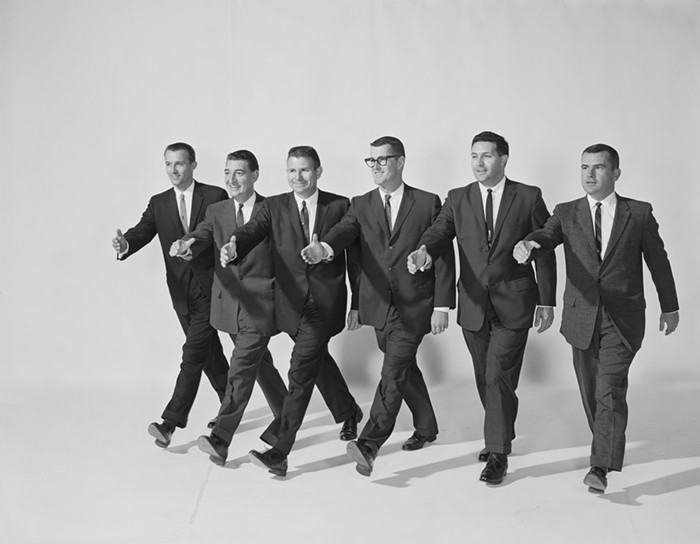To call James Lavadour a landscape painter is somehow misleading. Yes, depictions of the Northwest's desert mountains, swooping valleys, and twilit skies figure in nearly all of his work. But the formal aspects of his paintings are so vibrant and energized that his subject can seem secondary. This is especially true of the new works in Sun Spots. If you take a step back and relax your gaze, all the craggy mountainous forms disappear in a swirl of ecstatic brushstrokes and brooding tones. Suddenly, the paintings become masterful studies in form and coloration, with luscious vermilions, emeralds, and blacks bringing light to these dark images.
This breakdown in representation is best seen in "Updraft," in which the viewer is left to piece together the elements of Lavadour's signature landscapes. His oils drip and bleed, creating soft-focus color blends at the bottom of the painting, where rusty oranges and turquoises conjure an eroded stone surface. But "Updraft" is jarringly foregrounded by an erupting crosshatched pattern of white paint. Aided by the title, one might infer that the form is a tornado-like gust. On a less narrative level, it's simply an upheaval of dynamic, gestural painting.
Given Lavadour's oppressive palette and the violence of his application, his vision of the West is menacing and nightmarish. It's easy to imagine Cormac McCarthy's grim fictions unfolding in these settings. But where a painter like Michael Brophy, for example, addresses the evils that threaten nature in the Northwest with pointed directness, Lavadour's version of the region is more surreal and haunting. In "Wall," raging reds and suffocating blacks seem to depict a blazing forest fire. The forceful effect of such vivid colors, though, registers closer to a scene from Dante than mere fire and smoke.
The most spectacular piece in the show, "Deep Moon," is composed of nine panels—three across and three high. At the center is a lovely image of the Columbia River Gorge. The eight panels that surround it, however, are less representational and lapse into abstraction, even if Lavadour's mountainous terrain is always discernible. It's that play between expressive form and an amazingly articulate representation of his subjects that makes Sun Spots such a stunning show—and Lavadour's best group of paintings yet.












